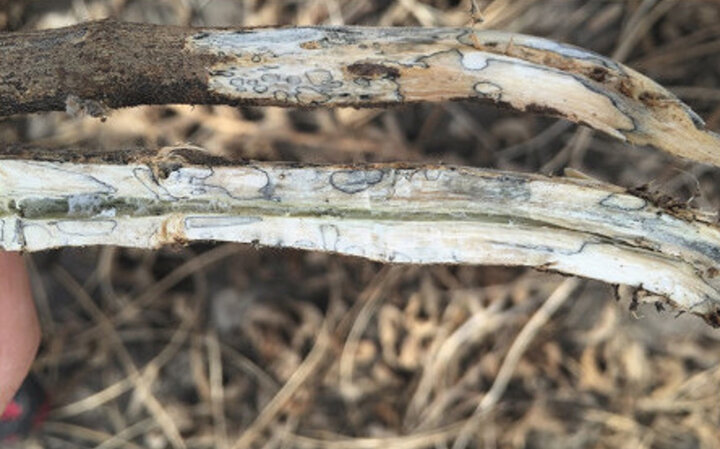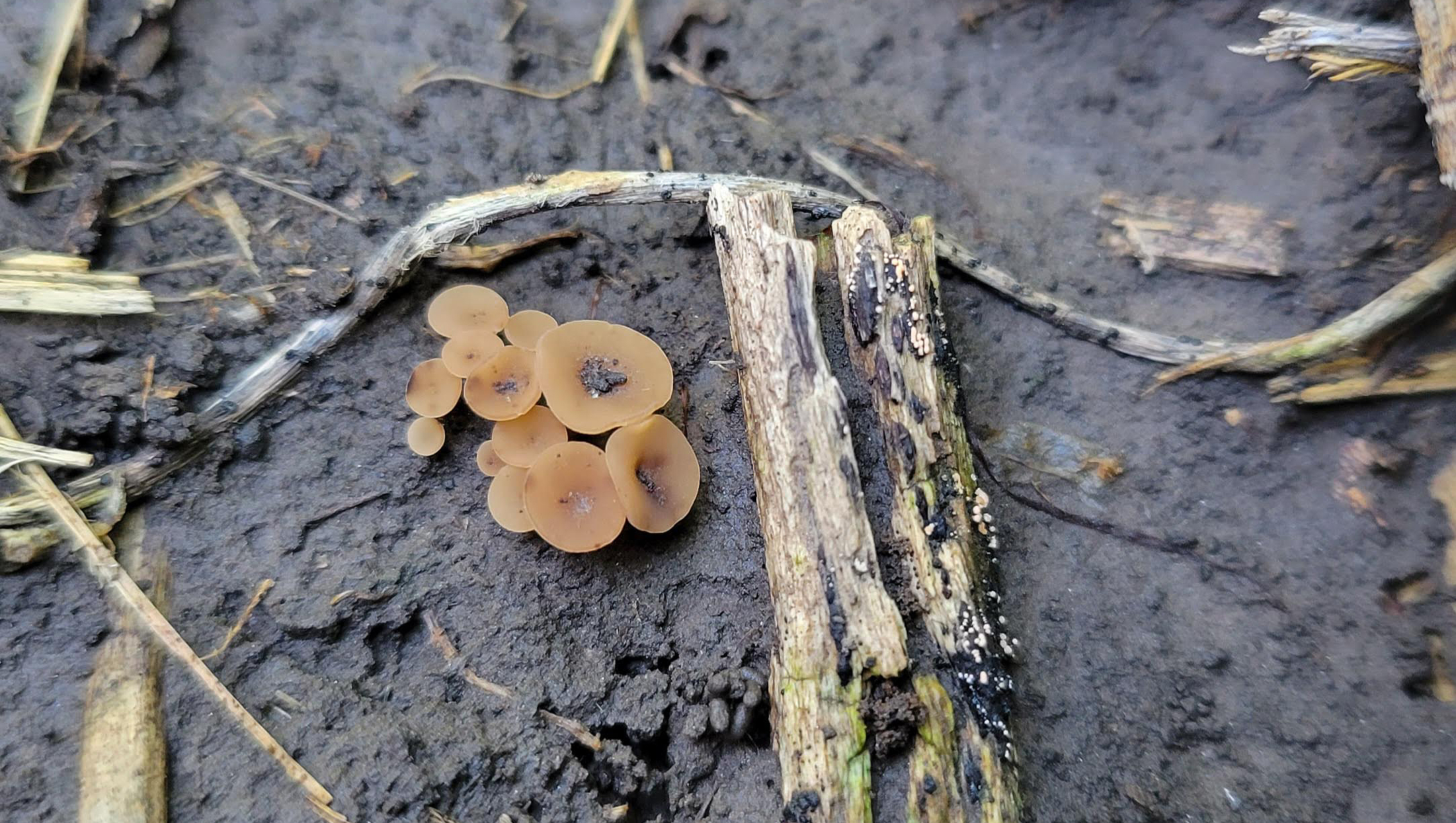By Dylan Mangel, Extension Plant Pathologist
Pathogen
Pod and stem blight is caused by the fungus Diaporthe sojae and D. longicolla. The fungus overwinters in infested crop debris and in infected seed.
In early summer, perithecia are produced and give rise to ascospores for initial infections. Another source of the disease is conidia produced on debris and infection sites on the plants.
Both spore types are splashed onto the plant or distributed with wind. Initial infections are latent until the soybean plant begins to senesce.
These pathogens were found in the United States in 1920 and are now endemic throughout most soybean growing areas.
While pod and stem blight have little impact on yield, seed quality may be negatively impacted when seed infections occur and Diaporthe (formerly Phomopsis) seed decay develops.

Disease Symptoms
The most obvious sign of pod and stem blight is the presence of pycnidia on infected material. Pycnidia are small, black spore-producing structures that are first seen on the petioles of shed leaves.
One of the most definitive diagnostic features of pod and stem blight is the appearance of lines of pycnidia, which may cover large sections of the stem. These may also occur in clusters near the nodes. Pycnidia can also occur in a scattered arrangement on the pods.
Infected seeds may appear healthy, or they may be shriveled and cracked. Infected seed are often covered with white mycelium and appear chalky. Severely infected seed may not germinate.

Favorable Environmental Conditions
Prolonged periods of warm, wet weather during pod development and maturation favor the spread of the fungus from the pod to the seeds. Very wet conditions will also favor stem infections during pod filling stages.
Management
Genetic Resistance
Resistance to pod and stem blight has been identified, but soybean varieties are not typically rated for this disease in seed catalogues. Similarly, soybean varieties will vary in their response to Diaporthe seed decay.
Cultural Practices
As this pathogen overwinters on residue, rotation with corn and other non-legume crops will give that residue time to decay. This ultimately reduces the amount of infectious material available the following season. Incorporating any residue into the soil will reduce inoculum, as the fungus overwinters in plant residue, but it’s probably not worth altering tillage practice to manage this disease.
As this pathogen can survive in seed, using a certified seed source at planting will ensure the new plants are not infected.
Chemical/Biological Control
Foliar fungicides may be applied to reduce the amount of Diaporthe seed decay. This practice is only recommended for fields grown for seed production. Applications applied from pod set (R3) through late pod stages (R6) will lower seed infection incidence.
Seed known to be infected that will be used for planting should be treated with a fungicidal seed treatment.
Resources
Updated from a previous article by Loren J. Giesler, former extension plant pathologist
Soybean Diseases
- Soybean Diseases (Home)
- Anthracnose
- Bacterial Blight
- Bacterial Pustule
- Bean Pod Mottle Virus
- Brown Spot
- Brown Stem Rot
- Charcoal Rot
- Frogeye Leaf Spot
- Phytophthora Root and Stem Rot
- Pod and Stem Blight
- Purple Seed Stain
- Rhizoctonia Root Rot
- Sclerotinia Stem Rot
- Soybean Cyst Nematode (SCN)
- Soybean Mosaic Virus
- Soybean Rust
- Stem Canker
- Sudden Death Syndrome (SDS)
